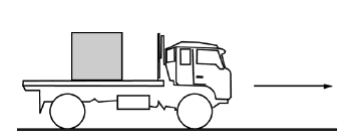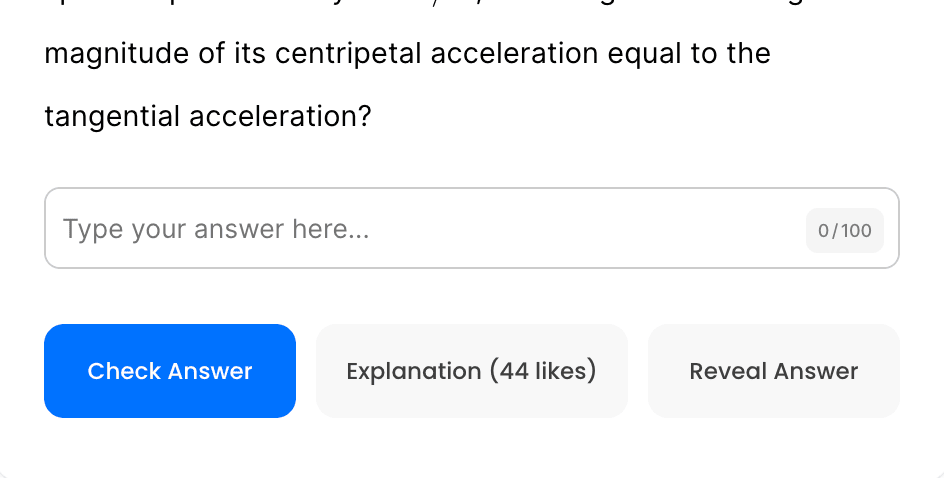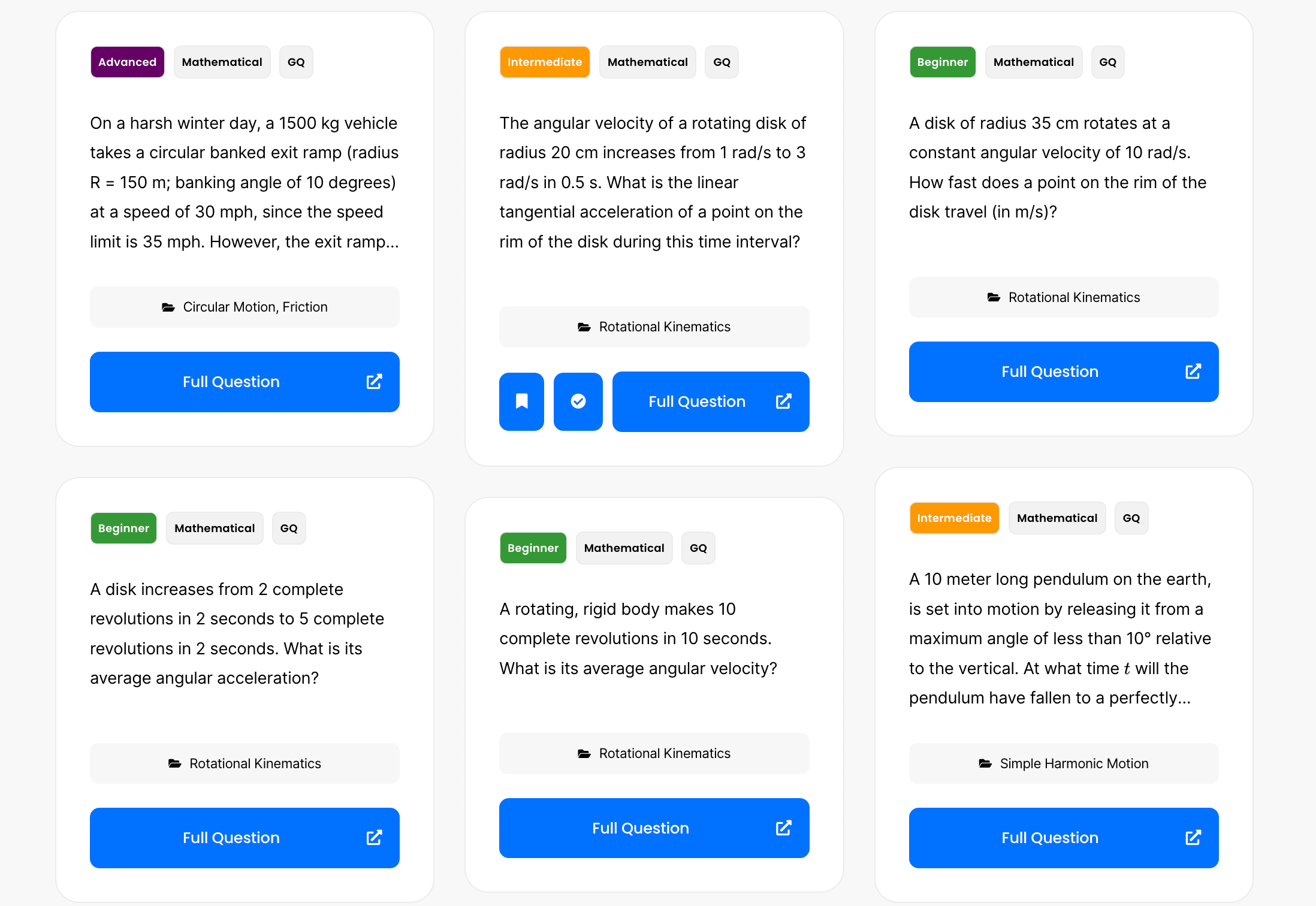Runner A begins a \( 100 \)-meter race at time \( t = 0 \) and runs at a constant speed of \( 6.0 \) \( \text{m/s} \). Runner B starts the same race \( 3 \) seconds later but runs at \( 9.0 \) \( \text{m/s} \).
An airliner arrives at the terminal, and the engines are shut off. The rotor of one of the engines has an initial clockwise angular velocity of \( 2000 \) \( \text{rad/s} \). The engine’s rotation slows with an angular acceleration of magnitude \( 80.0 \) \( \text{rad/s}^2 \).
How large must a heating duct be if air moving \( 3 \ \frac{\text{m}}{\text{s}} \) along it can replenish the air in a room of \( 300 \ \text{m}^3 \) volume every \( 15 \) minutes? Assume the air’s density remains constant.

A \( 4700 \, \text{kg} \) truck carrying a \( 900 \, \text{kg} \) crate is traveling at \( 25 \, \text{m/s} \) to the right along a straight, level highway, as shown above. The truck driver then applies the brakes, and as it slows down, the truck travels \( 55 \, \text{m} \) in the next \( 3.0 \, \text{s} \). The crate does not slide on the back of the truck.
What is the effect on the period of a pendulum if you double its length?
In archery, should the arrow be aimed directly at the target? How should your angle of aim depend on the distance to the target? Explain without using equations.
A delivery truck is traveling north. It then turns along a leftward circular curve. This the packages in the truck to slide to the RIGHT. Which of the following is true of the net force on the packages as they are sliding?
What would your bathroom scale read if you weighed yourself on an inclined plane? Assume the mechanism functions properly, even at an angle.
The distance from earth to sun is \(1 \, \text{AU}\). The distance from Saturn to sun is \(9 \, \text{AU}\). Find the period of Saturn’s orbit in years. You can assume that the orbits are circular.
An airplane with a speed of \( 97.5 \, \text{m/s} \) is climbing upward at an angle of \( 50.0^\circ \) with respect to the horizontal. When the plane’s altitude is \( 732 \, \text{m} \), the pilot releases a package.
A “doomsday” asteroid with a mass of \( 1010 \, \text{kg} \) is hurtling through space. Unless the asteroid’s speed is changed by about \( 0.20 \, \text{cm/s} \), it will collide with Earth and cause tremendous damage. Researchers suggest that a small “space tug” sent to the asteroid’s surface could exert a gentle constant force of \( 2.5 \, \text{N} \). For how long must this force act?
A pendulum has a period of 2.0 s on Earth. What is its length?
By continuing you (1) agree to our Terms of Use and Terms of Sale and (2) consent to sharing your IP and browser information used by this site’s security protocols as outlined in our Privacy Policy.
Quick Start Guide
AP physics 1, AP C, honors and advanced physics students.
Quickly filter questions by units and more.


Here’s guide to using 5 UBQ filters.
GQ = general question, MCQ = multiple choice, FRQ = free response.


Click the check or bookmark button.
Now you’ll be able to see completed or bookmarked questions at a glance!
Answer keys, personalized for you.

Phy will be responsible for grading your FRQs and GQs.
No more copy and pasting. Just solve and snap.
Questions for Mastery

By continuing you agree to nerd-notes.com Terms of Service, Privacy Policy, and our usage of user data.